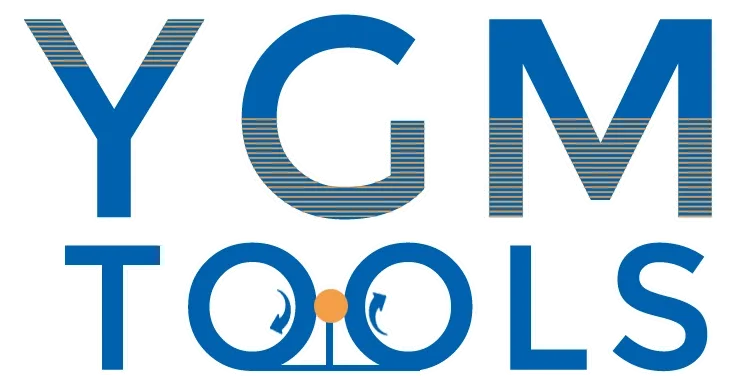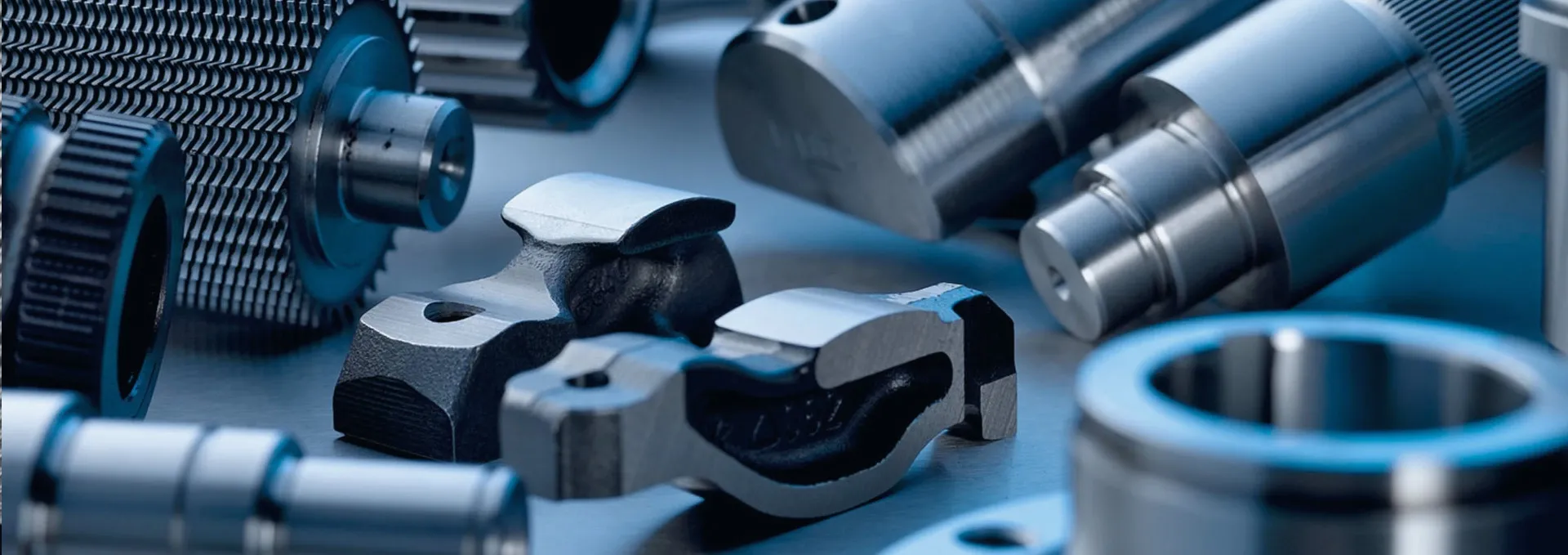Precision Thread Rolling Tools & Machines | Optimal Performance
Introduction to Thread Rolling Technology
In the intricate world of industrial fastening and precision manufacturing, the thread rolling tool stands as a cornerstone technology. Far from merely cutting threads, thread rolling is a cold-forming process that reshapes material using specialized dies, resulting in threads with superior strength, fatigue resistance, and surface finish. This technique is indispensable across a vast array of B2B applications, from automotive and aerospace to construction and heavy machinery, where the integrity and reliability of fasteners are paramount. Unlike traditional thread cutting, thread rolling realigns the material's grain structure, enhancing the mechanical properties of the threaded part by compressing and strengthening the material rather than removing it.
This article delves into the core aspects of thread rolling tools and related machinery, including flat die thread rolling machine, small thread rolling machine, and hydraulic thread rolling machine. We will explore current industry trends, detailed technical specifications, diverse application scenarios, and the distinct advantages that make thread rolling a preferred method for high-volume, high-precision thread production. Our objective is to provide a comprehensive resource for engineers, procurement specialists, and decision-makers seeking to optimize their manufacturing processes and ensure the highest quality in their threaded components.
Current Industry Trends in Thread Rolling
The thread manufacturing industry is continuously evolving, driven by demands for greater precision, efficiency, and sustainability. Key trends influencing the development and adoption of modern thread rolling solutions include:
- Automation and Industry 4.0 Integration: The integration of advanced automation, robotics, and IoT (Internet of Things) into thread rolling machines is transforming production lines. This allows for real-time monitoring, predictive maintenance, and optimized process control, leading to higher throughput and reduced manual intervention. Modern hydraulic thread rolling machine models, for instance, often feature sophisticated HMI (Human-Machine Interface) systems for precise parameter adjustments and remote diagnostics.
- Material Innovation: As industries require fasteners made from increasingly exotic and high-strength alloys (e.g., titanium, superalloys, advanced stainless steels), the design and material composition of thread rolling dies are continuously adapted to handle these challenging materials without compromising thread integrity or tool life.
- Energy Efficiency: A growing focus on environmental sustainability is prompting manufacturers to develop more energy-efficient thread rolling machines. This includes optimizing hydraulic systems, utilizing servo-driven mechanisms for precise control, and implementing smart power management solutions to reduce operational costs and environmental footprint.
- Miniaturization and Micro-threading: With the rise of compact electronic devices, medical instruments, and advanced optics, there's an increasing demand for precision micro-threading. This pushes the boundaries of small thread rolling machine capabilities, requiring finer dies and extremely accurate machine control for threads with pitches often below 0.5mm.
- Customization and Flexibility: Manufacturers are seeking thread rolling solutions that can quickly adapt to varied product specifications and smaller batch sizes. Modular designs and quick-change tooling systems are becoming standard, enhancing the versatility of a flat die thread rolling machine to handle diverse production runs with minimal setup time.
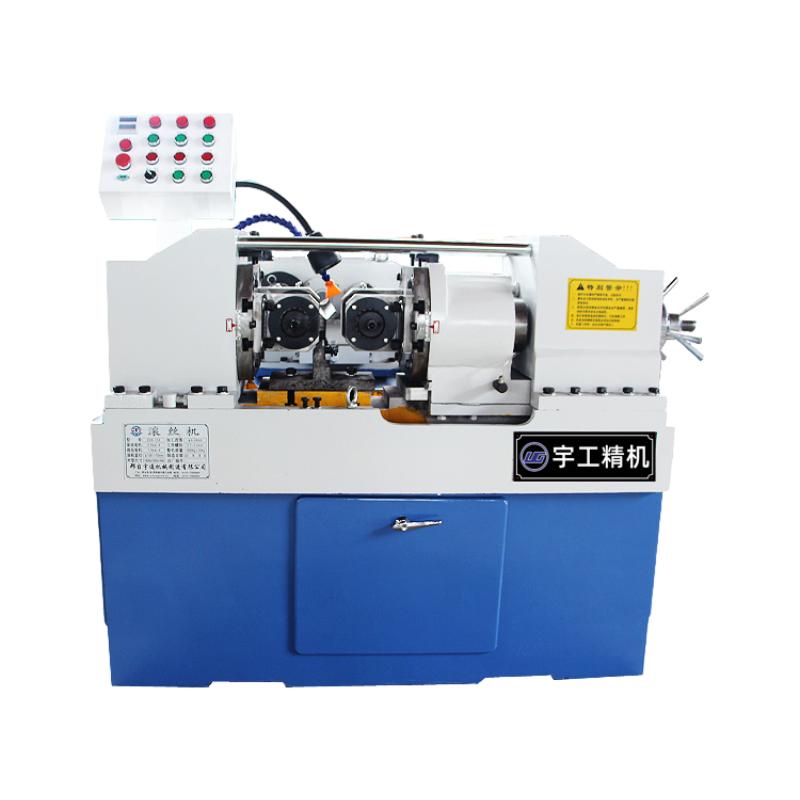
Manufacturing Process Flow of a Thread Rolling Tool
The production of a high-performance thread rolling tool, specifically the dies, is a sophisticated multi-stage process requiring meticulous control and advanced metallurgical knowledge. The quality and longevity of the dies directly impact the final product's thread integrity and overall production efficiency.
Key Materials and Their Properties:
Thread rolling dies are typically manufactured from specialized high-alloy tool steels, such as D2 (AISI D2 / DIN 1.2379), M2 (AISI M2 / DIN 1.3343), or advanced powder metallurgy steels. These materials are chosen for their exceptional hardness, wear resistance, toughness, and ability to maintain structural integrity under extreme compressive forces and repeated stress cycles, even at elevated temperatures. The specific alloy selection depends on the workpiece material, desired production volume, and the complexity of the thread profile.
Detailed Manufacturing Steps:
- Material Selection and Preparation: High-quality tool steel billets are selected based on stringent material specifications. These billets undergo initial heat treatment (annealing) to improve machinability and homogenize the grain structure, preparing them for subsequent processing.
- Forging/Casting (for specific forms): While many dies are precision machined from solid stock, larger or more complex forms might involve forging to refine the grain structure and enhance mechanical properties, or casting for initial rough shaping, followed by extensive machining to achieve the required precision.
- Rough Machining: Advanced CNC machining centers are utilized to rough machine the die blanks to a near-net shape. This initial stage focuses on efficient material removal, bringing the blank close to its final dimensions while ensuring minimal material waste.
- Precision CNC Thread Profile Generation: This is the most critical stage. Highly precise CNC grinding or milling machines are employed to create the exact thread profile on the die surface, including the lead angle, pitch, and critical flank angles. Advanced CAD/CAM software ensures adherence to precise engineering drawings. For flat die thread rolling machine applications, two precisely matched flat dies are produced with mirror-image thread profiles.
- Heat Treatment (Hardening and Tempering): The machined dies undergo a meticulously controlled multi-stage heat treatment process. This involves austenitizing at high temperatures, rapid quenching (often in oil or salt baths) to achieve maximum hardness, followed by multiple tempering cycles. Tempering reduces brittleness while maintaining the required hardness, significantly improving toughness and resistance to chipping. Typical hardness for thread rolling dies ranges from 60-65 HRC (Rockwell Hardness C scale).
- Finish Grinding and Lapping: After heat treatment, the dies undergo ultra-precision grinding to achieve final dimensions, parallelism, and surface finish. Lapping or superfinishing techniques may be applied to the working surfaces to minimize friction during operation, enhance the quality of the rolled threads, and extend overall die life.
- Coating (Optional but common): For enhanced performance and extended service life, dies may receive specialized PVD (Physical Vapor Deposition) coatings such as Titanium Nitride (TiN), Titanium Carbonitride (TiCN), or Chromium Nitride (CrN). These coatings significantly increase surface hardness, reduce friction, and improve wear resistance, thereby substantially extending the operational lifespan of the tool.
- Quality Control and Testing: Each die undergoes rigorous quality control. This includes dimensional inspection using coordinate measuring machines (CMMs), optical comparators, and profilometers to verify thread geometry against blueprints. Hardness testing, metallurgical analysis (e.g., microstructure), and functional tests (rolling test pieces) ensure absolute compliance with international standards such as ISO 965 (ISO general purpose metric screw threads – Tolerances) and ANSI B1.1 (Unified Inch Screw Threads). Our tools consistently meet or exceed these benchmarks, guaranteeing optimal performance and reliability in demanding industrial environments.
Expected Service Life and Maintenance:
The service life of a high-quality thread rolling die depends heavily on the workpiece material, machine parameters (e.g., rolling speed, pressure), lubrication quality, and diligent maintenance. With proper usage and care, premium dies can produce millions of threads. Regular cleaning, inspection for wear or damage, and appropriate lubrication are crucial for maximizing their lifespan. Worn dies can often be re-ground or reconditioned by specialized services, extending their useful life and offering significant cost savings over replacement.
Product Specification Table: Automatic Nut and Bolt Threading Rod Thread Rolling Machine
| Parameter | Specification (Typical Range) |
|---|---|
| Model Series | Z28-80 to Z28-250 (e.g., for different capacities) |
| Rolling Diameter Range | Ø 5mm - Ø 150mm (Applicable for various models) |
| Max. Thread Pitch | 8mm |
| Max. Thread Length | Continuous or up to 600mm (depends on feed system and machine type) |
| Rolling Force (Max.) | 150 kN - 800 kN (Variable by machine, e.g., hydraulic thread rolling machine) |
| Main Motor Power | 7.5 kW - 45 kW (Higher for heavy-duty applications) |
| Rolling Speed | 20-60 RPM (Revolutions per minute), variable speed drives often included |
| Machine Weight | 2,500 kg - 20,000 kg (Depends on model and capacity) |
| Control System | Advanced PLC Control with HMI Touchscreen & Diagnostics |
| Cooling System | Integrated Oil Cooling System with Filtration |
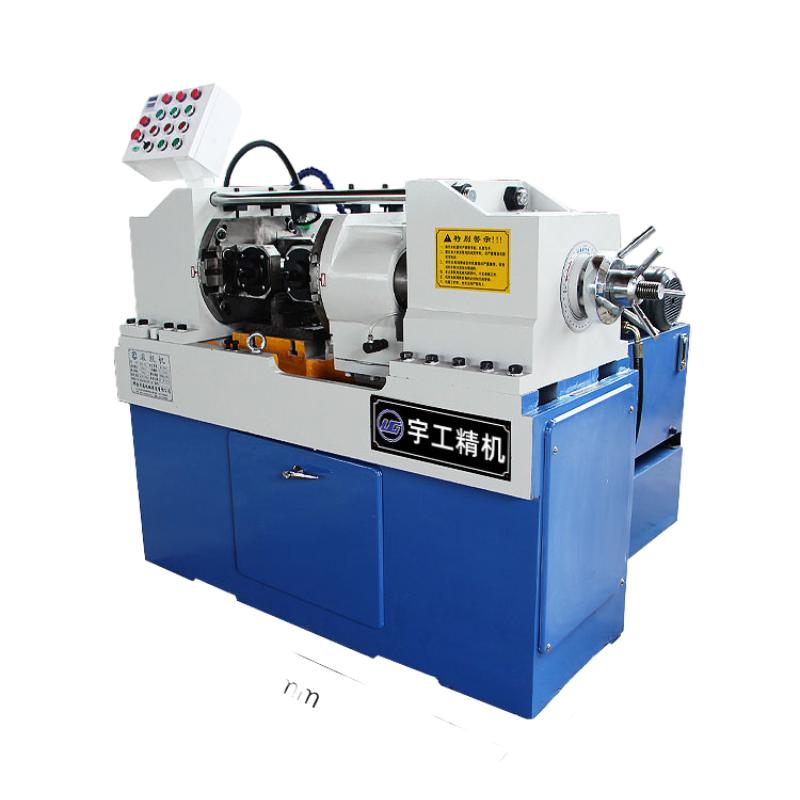
Application Scenarios and Target Industries
The versatility and superior mechanical properties imparted by thread rolling make the process indispensable across a wide spectrum of demanding industries. Its ability to produce high-integrity threads reliably and economically is highly valued in critical applications.
- Automotive Industry: From engine components and chassis fasteners to steering and suspension systems, thread rolled bolts, studs, and shafts ensure enhanced fatigue resistance crucial for vehicle safety and longevity. For instance, cold-formed wheel studs commonly offer significantly higher shear strength and resistance to vibration loosening compared to cut threads.
- Aerospace and Defense: In aircraft and defense systems, where fastener failure can have catastrophic consequences, components must withstand extreme temperatures, vibrations, and high cyclic stresses. Thread rolling provides the necessary strength, corrosion resistance, and precision for critical components like landing gear bolts, engine mounts, and structural airframe fasteners.
- Petrochemical and Energy: Pipelines, offshore platforms, and refinery equipment often operate in severely corrosive and high-pressure environments. Thread rolled components, especially those with increased surface hardness and improved material grain flow, offer superior resistance to stress corrosion cracking and fatigue. This enhances operational safety, extends maintenance cycles, and contributes to overall energy saving through reduced downtime.
- Construction and Infrastructure: High-strength bolts for bridges, structural frameworks, and heavy machinery benefit immensely from thread rolling. The process ensures consistent quality and robust performance under dynamic loads and environmental exposure, crucial for long-term structural integrity and safety.
- Medical Devices: Precision micro-threads for surgical instruments, implants, and diagnostic equipment demand flawless accuracy and an impeccable surface finish free of burrs. small thread rolling machine capabilities are paramount here, ensuring biocompatibility, functional reliability, and sterile manufacturing.
- Metallurgy and Heavy Machinery: Components for rolling mills, mining equipment, and agricultural machinery require robust, wear-resistant threads capable of enduring harsh operating conditions and heavy, sustained loads. The improved material density and superior surface finish from thread rolling contribute significantly to their durability and operational lifespan.
- Water Supply & Drainage Systems: Fasteners and threaded pipe connections in water infrastructure demand high corrosion resistance and leak-proof performance. Thread rolling improves the surface finish, which can significantly enhance the effectiveness of sealants and protective coatings, providing superior corrosion resistance against various media and extending system longevity.
In these diverse scenarios, the advantages of using a thread rolling tool—such as enhanced fatigue strength, improved surface finish, and material savings—are not merely theoretical benefits but critical factors that directly contribute to product reliability, operational efficiency, and long-term cost-effectiveness.
Technical Advantages of Thread Rolling
The selection of thread rolling over traditional thread cutting is often driven by a distinct set of technical and economic advantages. These benefits underscore why the process is favored in high-performance and high-volume manufacturing environments for critical components.
- Superior Strength and Fatigue Resistance: Unlike cutting, which severs material fibers and can create micro-notches, thread rolling cold-forms the material. This compresses and redirects the grain flow along the thread contours, strengthening the thread by improving its tensile and shear strength. Crucially, it enhances fatigue resistance by up to 30-50% due to cold work hardening and the introduction of beneficial compressive residual stresses at the thread roots. This is particularly vital for dynamic load applications where cyclical stresses are present.
- Excellent Surface Finish and Hardness: The cold-forming process burnishes the thread surfaces, resulting in a smooth, work-hardened finish with a high degree of surface integrity. This significantly reduces friction during assembly, improves resistance to wear and abrasion, and enhances corrosion resistance. Typical surface finishes (Ra) can be as low as 0.2-0.8 µm, which is significantly smoother than what is achievable with most thread cutting methods.
- Material Savings and Eco-efficiency: Thread rolling is a chipless process, meaning no material is removed as swarf or scrap. This results in significant material savings, especially when working with expensive or rare alloys. The absence of chips also reduces waste disposal costs, minimizes cleaning requirements, and contributes to a cleaner manufacturing environment, aligning with modern sustainability goals and offering direct energy saving in material processing.
- Enhanced Corrosion Resistance: The compressed and unbroken grain structure, along with the smoother, burnished surface, makes thread rolled components less susceptible to stress corrosion cracking, hydrogen embrittlement, and other forms of corrosion initiation. This is a critical advantage in harsh operating environments, extending the service life of components and reducing the need for costly protective coatings.
- High Production Rates and Cost-Effectiveness: Thread rolling machines, particularly automated systems like a flat die thread rolling machine or a hydraulic thread rolling machine, can produce threads at very high speeds, often significantly outperforming thread cutting methods in terms of parts per minute. While the initial investment in high-quality dies can be higher, their longer service life and the dramatically higher production throughput lead to a lower cost per piece in high-volume manufacturing scenarios.
- Dimensional Accuracy and Repeatability: The precision of the hardened and ground thread rolling dies, coupled with the controlled nature of the cold-forming process, ensures extremely tight tolerances and high repeatability from part to part. This consistency is essential for interchangeable parts, automated assembly lines, and applications requiring precise thread engagement.

Vendor Comparison for Thread Rolling Solutions
Choosing the right vendor for thread rolling machinery and tooling requires a thorough evaluation of several critical factors beyond just initial price. A reputable supplier should offer a robust blend of expertise, certified quality, and comprehensive after-sales support to ensure long-term operational success.
Key Comparison Criteria:
- Machine Types and Capabilities: Evaluate the breadth of machines offered (e.g., flat die thread rolling machine, two-die cylindrical, three-die planetary, hydraulic thread rolling machine, small thread rolling machine). Does the vendor cater to your specific workpiece diameter, thread pitch, material requirements, and desired production volumes?
- Tooling Expertise and Quality: The performance and longevity of the thread rolling dies are paramount. Assess the vendor's expertise in die design, material selection (e.g., specific tool steels), advanced heat treatment processes, and specialized coating technologies. Inquire about their track record with challenging materials and complex thread profiles.
- Automation and Integration Readiness: For modern, efficient production lines, the ability to integrate machines into existing or new automated systems (e.g., robotic loading/unloading, inline inspection) is crucial. Does the vendor offer solutions compatible with Industry 4.0 initiatives and provide necessary interfaces?
- Service and Support Infrastructure: Beyond the initial sale, reliable technical support, readily available spare parts, operator training programs, and comprehensive maintenance services are vital to minimize downtime and ensure continuous, optimized operation. Our commitment to prompt and expert post-sales support is a testament to our dedication to client success.
- Certifications and Adherence to Standards: Verify that the vendor's products comply with relevant international quality and safety standards (e.g., ISO 9001 for quality management systems, CE marking for European safety standards, specific industry standards like ASTM or DIN). This indicates a robust commitment to product quality, reliability, and safety.
- Customization Capabilities: Can the vendor provide tailored solutions for unique application requirements? This includes designing custom machine configurations, developing specialized tooling for unusual thread forms or materials, or integrating unique material handling systems to optimize your specific production flow.
Comparative Overview: Thread Rolling Machine Types
| Feature | Flat Die Thread Rolling Machine | Two-Die Cylindrical Rolling Machine | Three-Die Planetary Rolling Machine |
|---|---|---|---|
| Mechanism | Reciprocating flat dies; one stationary, one moving | Two rotating cylindrical dies; workpiece fed between them | Three rotating cylindrical dies; workpiece centered and rolled |
| Typical Production Volume | High volume for standard fasteners (nuts, bolts, screws) | Medium to High volume for diverse parts (long rods, leadscrews, precision components) | Very High volume, continuous production (e.g., rebar, large batches of bolts) |
| Workpiece Length Capability | Finite (limited by die length, typically up to 300mm) | Infinite (thru-feed rolling) or finite (in-feed rolling) | Infinite (thru-feed rolling for continuous production) |
| Thread Profile Versatility | Standard metric/imperial, fine threads, special profiles | Standard, fine, trapezoidal, ACME, worm gears, knurling | Standard threads, high-speed production, limited complex profiles |
| Machine Complexity & Setup | Medium complexity, relatively quick setup for die changes | Medium to High complexity, more involved setup for precision | High complexity, optimized for very high throughput, longer setup |
| Cost-Efficiency (High Volume) | Excellent, especially for standard fastener production | Very Good, versatile for varied product types | Excellent for continuous, dedicated production runs |
Customized Solutions and Expertise
At Motetools, we understand that standard solutions do not always meet the unique challenges of complex manufacturing environments. Our extensive expertise in thread rolling technology, honed over two decades, allows us to offer highly customized solutions precisely engineered to specific client requirements. This bespoke approach ensures optimal performance, unparalleled efficiency, and maximum return on investment for even the most specialized applications.
Our dedicated engineering team collaborates closely with clients from initial conceptualization through to detailed design, manufacturing, and final implementation. We specialize in designing and producing specialized thread rolling dies, modifying machine configurations (e.g., custom hydraulic thread rolling machine setups for exceptionally heavy-duty applications, or compact small thread rolling machine designs for limited factory footprints), and seamlessly integrating automated feeding and material handling systems. Whether the challenge involves developing tooling for exotic or hard-to-form materials, achieving extremely tight tolerances for aerospace or medical components, or optimizing production for unique, non-standard thread profiles, our unwavering commitment is to deliver precision-engineered solutions that exceed expectations. Our robust in-house design and manufacturing capabilities, coupled with stringent quality control protocols (certified to ISO 9001 standards), guarantee the highest standards of product reliability, consistent performance, and long-term durability.
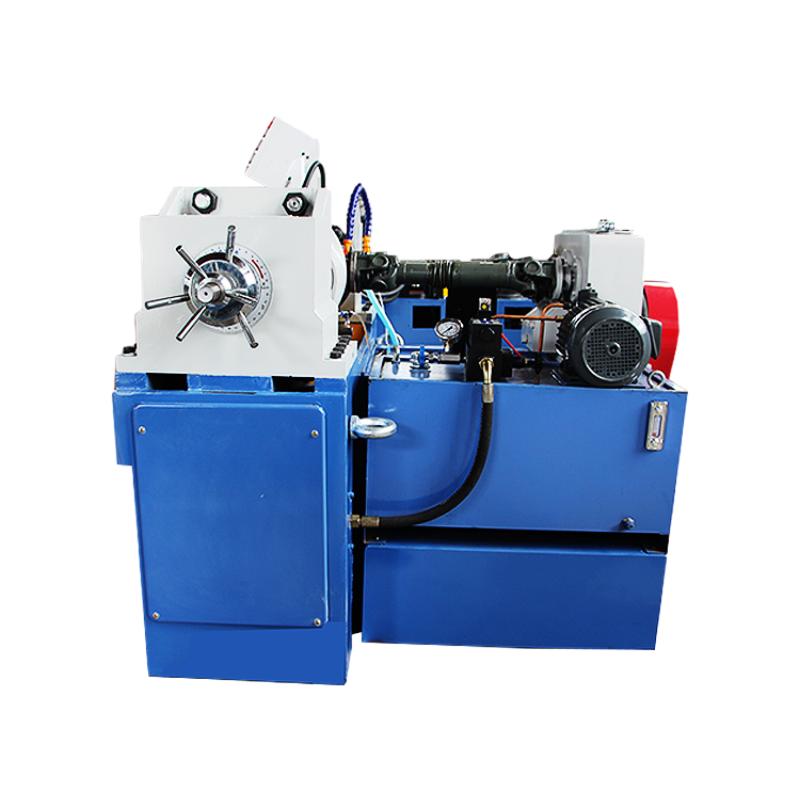
Application Case Studies
Case Study 1: High-Strength Fasteners for Automotive Chassis
A leading automotive manufacturer approached us with the critical challenge of improving the fatigue life of high-stress chassis fasteners made from a specialized alloy steel. Their existing process, involving traditional cut threads, was showing premature failure under dynamic road conditions, leading to significant warranty claims. We engineered a comprehensive solution utilizing a high-speed flat die thread rolling machine, equipped with specially designed and coated dies. Our solution resulted in a validated 40% increase in fatigue strength, confirmed through extensive laboratory testing and rigorous field trials, and an immediate, measurable reduction in warranty claims directly related to fastener failure. The cold-forming process also allowed for a more consistent and precise thread geometry, significantly improving automated assembly line efficiency and reliability. This project unequivocally demonstrated the tangible benefits of enhanced material grain flow and superior surface integrity provided by optimized thread rolling.
Case Study 2: Corrosion-Resistant Threaded Rods for Offshore Platforms
An prominent offshore energy company required large quantities of threaded rods for a new deep-sea platform, necessitating exceptional corrosion resistance and durability in an extremely harsh marine environment. They previously used hot-rolled, cut-thread rods which exhibited significant susceptibility to pitting corrosion and stress corrosion cracking. We implemented a continuous thru-feed thread rolling process using a heavy-duty hydraulic thread rolling machine. This involved specialized dies manufactured from corrosion-resistant tool steel and a precise lubrication system optimized for high-nickel alloy steel. The resulting rolled threads exhibited a significantly smoother surface finish (achieving Ra 0.4 µm) and a denser, more uniform grain structure. This led to a measured 25% improvement in resistance to saltwater corrosion and a 15% increase in fatigue life under cyclic loading, substantially extending the operational lifespan of critical components and drastically reducing long-term maintenance costs in an unforgiving environment.
Case Study 3: Precision Micro-Threads for Medical Devices
A leading medical device manufacturer approached us with the challenge of producing extremely small, highly precise threads for miniature surgical implants. These required tolerances down to ±0.005mm and an absolute burr-free finish to ensure patient safety and device functionality. Traditional machining methods struggled significantly with repeatability, tool wear, and maintaining surface integrity at this microscopic scale. We deployed a highly specialized small thread rolling machine with custom-designed, super-precision dies and an integrated vision system for real-time quality assurance. The solution consistently delivered flawless, high-quality micro-threads on biocompatible titanium alloys, meeting all stringent medical industry standards (e.g., ISO 13485). The cold-forming process entirely eliminated burrs, a critical requirement for medical applications, and dramatically increased production speed and yield by over 60% compared to previous machining methods, unequivocally demonstrating the precision capabilities of advanced thread rolling.
Trustworthiness & Support
Frequently Asked Questions (FAQ)
Q: What types of materials can be thread rolled effectively?
A: Most ductile metals can be successfully thread rolled, including various grades of carbon steels, alloy steels, stainless steels, aluminum, brass, copper, and even some advanced exotic alloys like titanium. The material's formability and ductility are key factors in determining suitability for thread rolling.
Q: How does thread rolling specifically enhance thread strength compared to cutting?
A: Thread rolling is a cold-forming process that compresses the material, redirecting its grain flow along the thread contours. This compression induces beneficial residual stresses at the thread roots, significantly increasing tensile strength, shear strength, and most importantly, fatigue resistance by preventing crack initiation at stress concentration points, unlike thread cutting which severs material fibers.
Q: What is the typical lead time for a custom thread rolling solution?
A: Lead times for our custom thread rolling solutions vary based on complexity and specific customization requirements. Standard machines typically have a lead time of 4-8 weeks. Custom dies can range from 2-5 weeks, while highly specialized machine configurations or integrated production lines may require 12-20 weeks or more. We provide detailed timelines and consistent communication throughout the project upon initial consultation and agreement.
Q: What warranty commitment do you offer on your thread rolling machines?
A: We offer a comprehensive 12-month warranty on all our thread rolling machines, covering parts and labor against manufacturing defects. This reflects our confidence in the superior quality and robust engineering of our equipment. Extended warranty options are also available to provide further peace of mind for your investment. Specific terms and conditions apply and are fully detailed in our sales agreements.
Q: What kind of after-sales support and technical assistance is available?
A: Our commitment extends far beyond the sale. We provide extensive after-sales support including dedicated technical assistance, remote diagnostics, on-site installation and commissioning services, comprehensive operator training programs, and proactive preventive maintenance services. We also maintain a readily available stock of spare parts to ensure prompt support and minimize any potential downtime for your operations. Our global service network ensures expert assistance is always within reach for our valued clients.
Lead Time and Fulfillment
We maintain highly efficient manufacturing processes and a streamlined global supply chain to ensure timely delivery of all our products. For standard thread rolling machine components and off-the-shelf machines, typical lead times range from 4 to 8 weeks, depending on current inventory levels and active production schedules. Custom solutions, including specialized dies, tailored hydraulic thread rolling machine setups, or integrated production lines, are managed through a meticulous project-based approach with clear milestones and consistent client communication to ensure all agreed-upon delivery dates are met with precision.
Warranty and Customer Support
All Motetools thread rolling machines come with a robust standard 12-month warranty against manufacturing defects, underscoring our unwavering confidence in the quality, durability, and robust engineering of our equipment. Our dedicated customer support team provides comprehensive technical assistance, expert troubleshooting, and invaluable operational guidance. We offer flexible service contracts, including proactive preventive maintenance plans, specifically designed to ensure optimal machine performance, maximize longevity, and minimize unscheduled downtime. Our highly skilled and experienced technicians are readily available for on-site support, specialized training, and remote diagnostics, ensuring maximum operational efficiency and peace of mind for your significant investment in a thread rolling tool solution.
Conclusion
The thread rolling tool represents a pinnacle of precision manufacturing, offering unparalleled advantages in thread strength, fatigue resistance, superior surface finish, and exceptional production efficiency. From high-volume automotive fasteners processed on a versatile flat die thread rolling machine to intricate medical components produced with exacting precision on a small thread rolling machine, its advanced capabilities are central to producing reliable and remarkably durable threaded parts across diverse, demanding B2B sectors. By leveraging advanced materials, meticulously precise manufacturing processes, and cutting-edge machine technology—including robust hydraulic thread rolling machine systems—manufacturers can consistently achieve superior product quality, significantly enhance component performance, and realize substantial operational savings. Choosing a strategic partner with proven expertise, a steadfast commitment to customized solutions, and comprehensive, responsive support is paramount to unlocking the full transformative potential of thread rolling technology for your specific and evolving application needs.
References
- Smith, J. (2022). "Advances in Cold Forming Technology for Fastener Production." Journal of Manufacturing Processes, 32(4), pp. 287-295.
- International Organization for Standardization (ISO). (2018). ISO 965-1:2018, ISO general purpose metric screw threads – Tolerances – Part 1: Principles and basic data.
- American Society of Mechanical Engineers (ASME). (2019). ASME B1.1-2019, Unified Inch Screw Threads (UN and UNR Thread Forms).
- ASM Handbook, Vol. 14B: Metalworking: Sheet Forming. (2006). ASM International.
- Kalpakjian, S., & Schmid, S. R. (2014). Manufacturing Engineering and Technology (7th ed.). Pearson.
